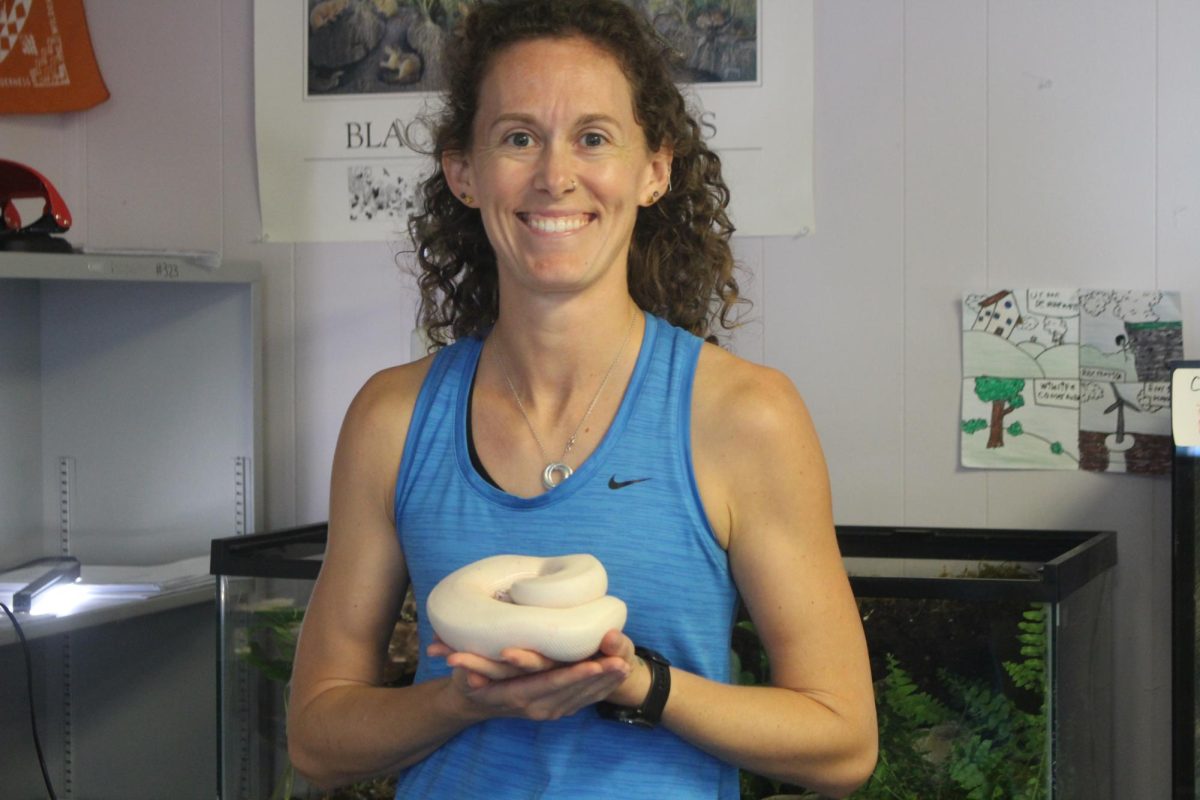A cultural celebration with roots going back thousands of years made a big appearance near the front of campus at the beginning of November in the form of a large and colorful ofrenda created by students in Akins Spanish classes.
El Día de los Muertos is a two-day celebration meant to honor loved ones who have passed away. On Nov. 1 and 2 of every year families build ofrendas (alters) designed to welcome the return of their ancestors’ spirits with food, drink, and their favorite souvenirs. Although widely celebrated in Mexico, El Día de los Muertos can also be seen in other cultures in Spain and other southern European countries.
Originating from Aztec and Toltecs beliefs dating back thousands of years, it is believed that on Nov. 1, a portal between the living and the dead opens. The spirits of loved ones follow the aroma trail that marigold flowers leave behind. These flowers are sprinkled from the ofrenda to the front doors of houses. Marigolds or cempasúchil (flower of the dead) are key components of El Día de los Muertos.
The tradition of creating an ofrenda involves the use of four elements: earth, water, air, and fire. Water is represented by any liquid, such as a favorite drink of the relative. Fire is usually represented by a candle and the wind is represented by tissue paper, which is also called papel picado in Spanish. Papel picado is usually contains cut-out designs hung above the ofrenda, allowing wind to flow through and around it. Earth is represented by food, especially breads like Pan de Muerto. Ofrendas can be personalized as much as the family wants by adding pictures, personal artifacts, or drawings that represent deceased relatives.
Spanish teacher Julio Nava Verdi organized the effor to build the large ofrenda at the front of the school with the help of his students.
“I hope the community and some other teachers that are not from the culture like Hispanic cultures or other nationalities from the Hispanic world that don’t celebrate it like us, get to know a little bit of that culture and celebration,” he said.
To educate unfamiliar students who don’t celebrate or know about El Día de los Muertos, Akins Spanish teachers built the large ofrenda at the front of the school filled with pictures of deceased family members, beloved celebrities, and past pets. Students and teachers honored and celebrated the lives they lived.
Teachers who participated in the project to create the ofrenda at school said it was beneficial not only for students who are not part of Hispanic culture but also for the students who are Hispanic but have never been exposed to it.
With the Akind student population being 78.1% Hispanic, many were born and raised in America and are not connected to their cultural roots without being raised in Mexico. This Día de los Muertos project allowed students to connect and learn a part of their heritage they might not have known about before.
Students in Verdi’s classes made their own smaller ofrendas that were placed upon the larger ofrenda with five steps representing the layers of ascending and descending of life. In addition, they also have had the freedom to make their ofrenda however they imagined.
Some students not only celebrate Dia de los Muertos at home and at school, but also at community festivals in Austin and other nearby cities. Viva la Vida is a Dia de los Muertos event that has occurred in Austin for more than 40 years. This year the event was held on Oct. 28 at the intersection of 4th Street and Congress Avenue in downtown Austin. People wore costumes and make-up and marched down the street with floats, enjoying live music and performances by a mix of ballet folklorico and Matachines dancers.
Viva la Vida gathers the surrounding community to partake in supporting local Hispanic and Mexican businesses along with artists. Activity centers allowed kids and adults alike to make marigold flower crowns, and have their faces painted with a skull face, and draw catrines “elegant skulls.” The Mexic-Arte Museum dispalyed its Día de los Muertos exhibition, featuring photography by Mary J. Andrade, and artwork by other Chicano artists.
Día de los Muertos is special to everyone who celebrates it. From students to teachers and people in the community, each person has their reasons for celebrating it. Ninth grader Diego Enriquez celebrates Día de los Muertos with his family “to honor the people that came before them.”
Some students even travel to Mexico to celebrate Día de los Muertos with their families, including senior Jason Ponti.
“It’s not about celebrating people who are dead but also what they did in our life,” Ponti said.
To some people, El Día de los Muertos is a solemn celebration to honor the spirits of loved ones passed. But to others, it is honoring the spirit that is constantly alive inside of them.










Julia Ferrel • Oct 30, 2025 at 1:15 PM
I love this tradition ! very good Akins